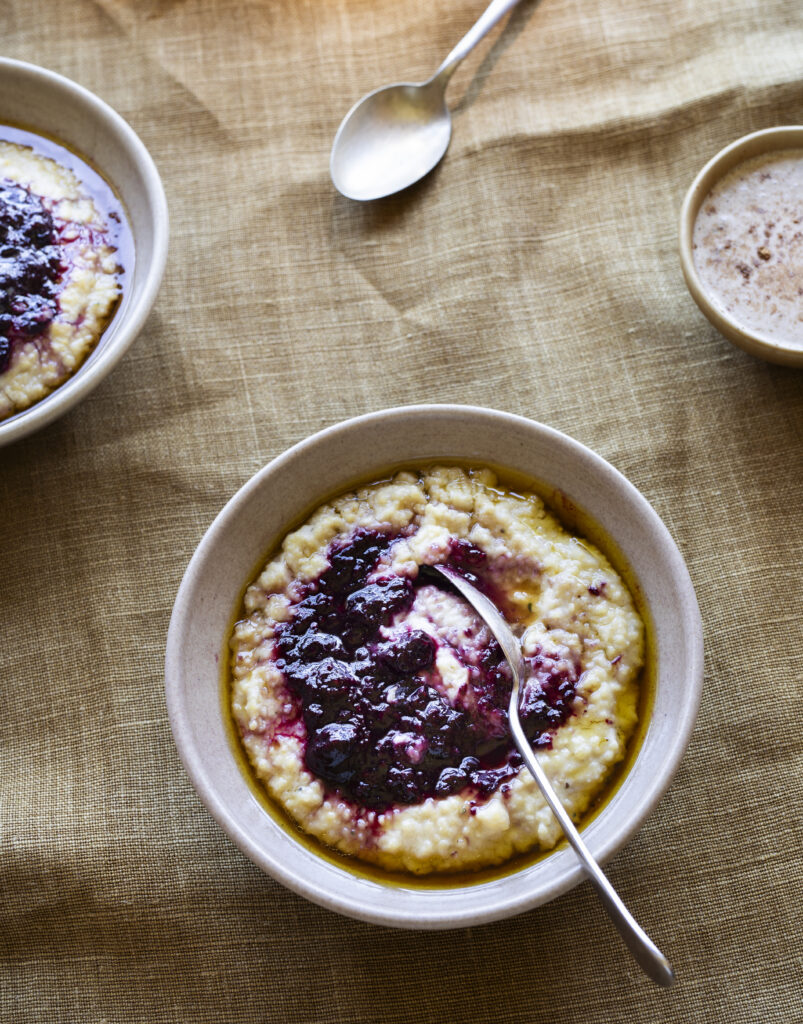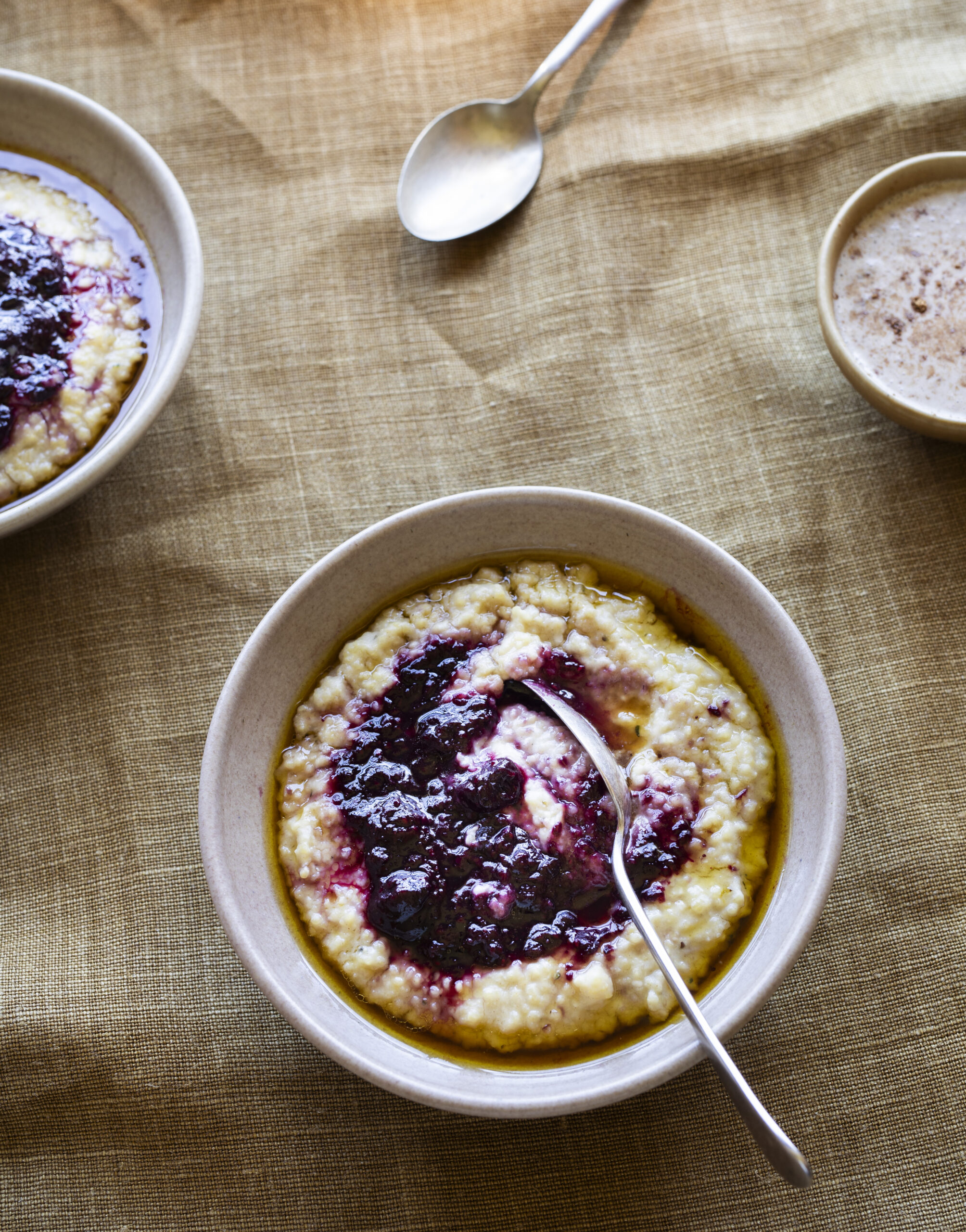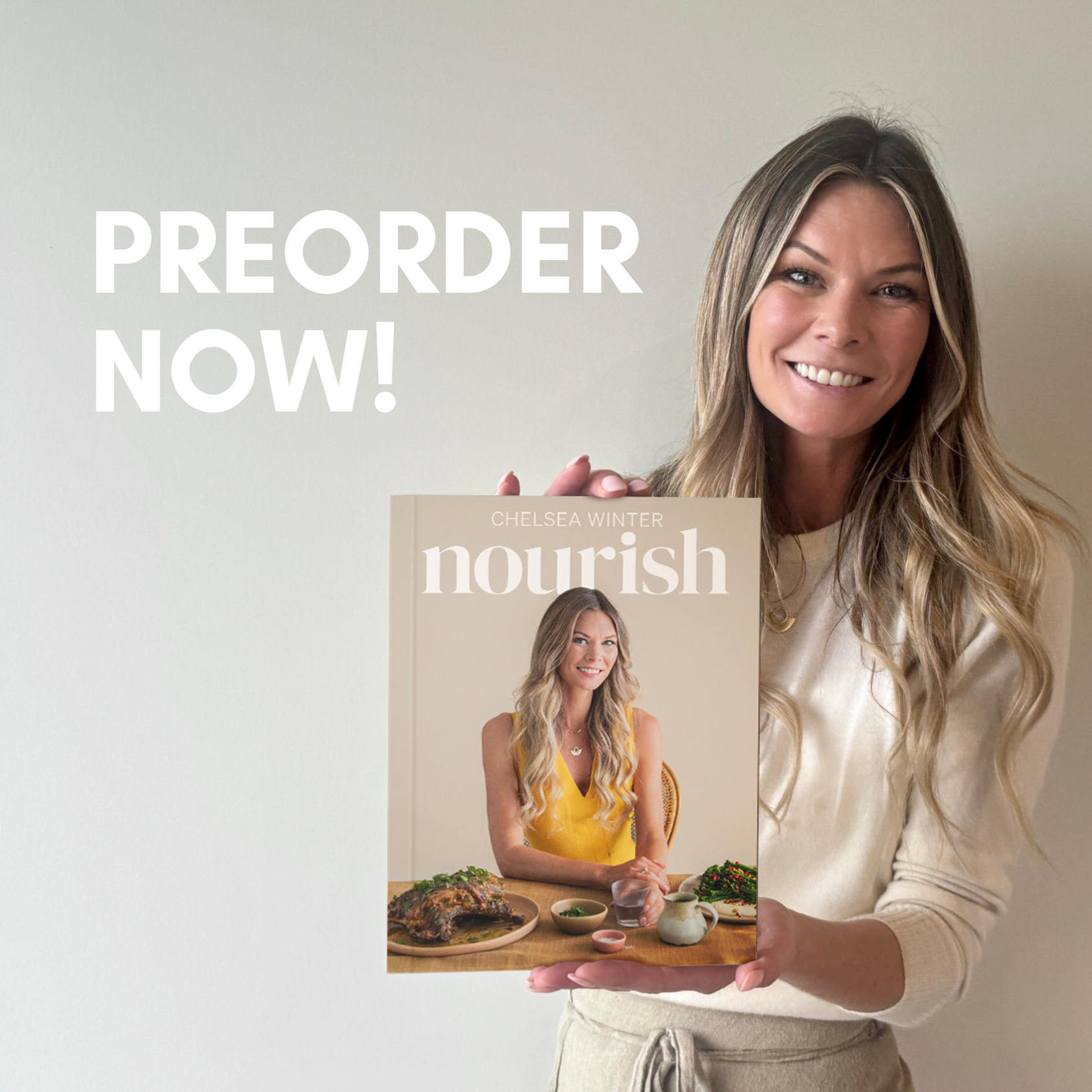
Move over, oats. Time to jazz up your breakfast with something more delicious, and more packed with nutrients! Meet my creamy millet porridge — a comforting, gluten-free alternative to oats that’s perfect for grim winter mornings. I’m so in love with this recipe. What’s millet, you might ask? It’s a bit of an unsung hero in the grain world, but it’s time to give it the spotlight because it’s incredible. Not only is it low GI and high in fibre, aiding digestion and keeping you feeling full longer, it’s also rich in minerals like magnesium and phosphorus, which support bone health and energy production. Packed with antioxidants, millet supports heart health by reducing cholesterol and lowering the risk of cardiovascular diseases. As if that wasn’t enough, its high magnesium content contributes to improved heart function and may help control blood pressure. Sooo basically this porridge is a super delightful way to start your day on a truly warming and nourishing note.
Where to by millet? You can get it online, or from any wholefoods store or bulk refillery. Hopefully the supermarkets start stocking it soon.


Prep time – 10 minutes + overnight soaking
Cooking time – 15 minutes
Serves 4
Gluten Free – Nut Free – Vegetarian
Ingredients
1 cup uncooked whole millet (soaked overnight in water with juice of 1/2 a lemon), drained
2 ½ cups water
1 ½ cups milk of choice
½ cup full-fat coconut cream
5 chopped dates (or 1 tbsp coconut sugar)
¼ cup hemp seeds (optional)
2 tsp pure vanilla extract
1 tsp ground cinnamon
¼ salt
To serve (choose what you like, depending on the season)
Coconut cream, coconut yoghurt or kefir
Extra milk
Melted ghee
Stewed fruit / wild blueberries / berry compote / banana slices
Pure maple syrup or raw honey
Orange zest
Almond butter
Extra hemp seeds
Method
I highly recommend soaking the millet in a medium saucepan with 2 cups of water, and ½ juiced lemon or 1 tbsp apple cider vinegar overnight (at least 8 hours) covered. This significantly reduces the phytic acid found in grains, which inhibits the absorption of many key nutrients. It takes an extra 2 minutes, but is highly recommended, it also reduces cooking time too.
In the morning, drain and rinse the millet and return to the saucepan with the water, milk, hemp seeds, dates, cinnamon, vanilla and salt. Bring to the boil, once it reaches a rapid simmer after a few minutes turn down to a low heat and cover.
Simmer for about 5-6 minutes, stirring often to ensure no bits get stuck to the bottom of the saucepan. Stir through coconut cream and remove from the heat, keep covered for an additional 5 minutes to finish cooking. The texture will be quite soupy, don’t worry, this is what we want. If it sits a while, it will go gloopy and firm up a bit. Just keep adding more liquid (milk) at any stage before serving to thin it down if that’s your preference.
This part is optional, if you like a smoother porridge (I don’t bother): Using a hand held stick blender, blitz a couple of until it’s creamy, but not pureed. You can skip this step if you don’t have a hand held stick blender, it’ll just be more textured.
Serve warm with a splash of extra milk, coconut cream, coconut yogurt or a touch of ghee and your favorite toppings. My combo recommendations are above, but the options are endless.
Store any leftovers in an airtight container in the fridge and reheat with more milk when needed.
Tips and swaps
- I often make this in advance and store it in the refrigerator for a super quick breakfast before school/kindy. It only takes a few minutes to reheat with some additional liquid.
- In the cooler months, I love adding a little ghee and maple with an orange and mixed berry compote as pictured, or stewed apples and cinnamon. In Summer, I often add coconut yogurt, fresh fruit or banana, walnuts and maple.
A bit more about millet
Millet is superior to most other grains – it’s a nutrient-dense, gut-friendly, and super versatile grain that deserves way more attention. It’s naturally gluten free, easy to digest, lower in anti-nutrients (see below) and lower in glyphosate (Round Up) residue as it isn’t typically sprayed (other grains like oats, wheat or rice are heavily sprayed – which is why choosing organic is really valuable if you can afford it). Also, unlike some grains, millet is alkaline-forming, which helps maintain a healthy pH balance in the body. Millet releases energy slowly which helps stablise blood sugar levels, and is loaded with nutrients like magnesium, iron and b vitamins. It’s also high in protein and fibre. We use it a fair bit in this book in both savoury and sweet dishes – I often use it in the place of rice, and always in the place of couscous (which is actually a pasta).











